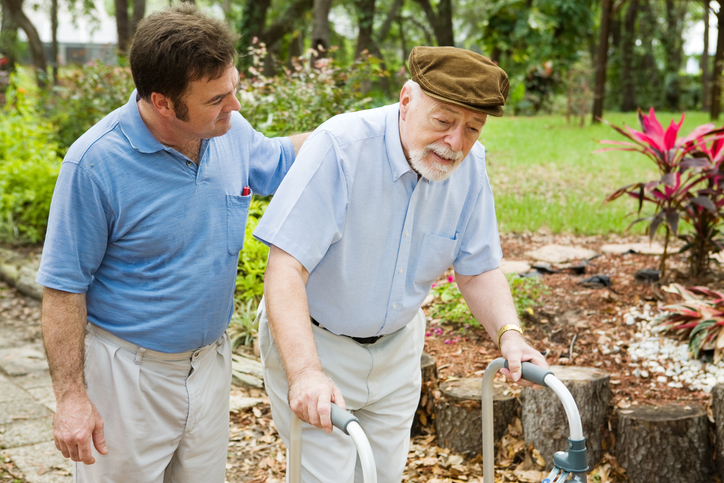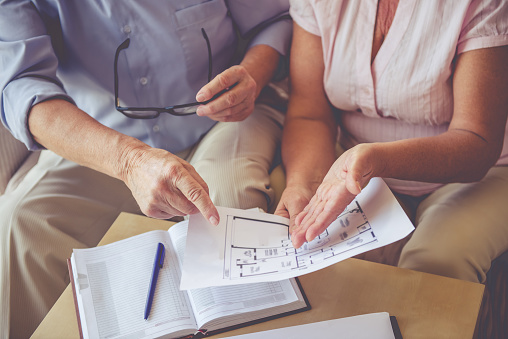In just five years, the number of caregivers in the U.S. has increased from 43.5 million to 53 million, according to recent data from the National Alliance for Caregiving (NAC) and AARP. That means one in five Americans is currently a family caregiver. In tandem with the increase in number, more family caregivers reported their own health is suffering—with 23% saying their health is worse—compared to the 2015 survey results. What can be done to help avoid an increase in caregiver burnout?
If the downward trend in caregiver health continues alongside the upward trend in the number of caregivers, self-care is perhaps more vital than ever. In this resource guide, we’ll show you what self-care really means — beyond bubble baths and meditation — and how to access it daily, not just a few times a year to help you avoid caregiver burnout.
How Working Caregivers are Impacted
A recent study by the National Alliance for Caregiving and AARP study, shows that 61% of working caregivers have had to change their work schedule. Here’s how it breaks down:
- 49% have to go to work late or leave early or take time off
- 15% have had to take a leave of absence
- 14% reduce their hours or take a demotion
- 39% of caregivers leave their job to care for a family member or friend.
- 34% quit because their job does not provide flexible hours.
Many employees are in their prime earning years. Not only do they lose their wages, but often health insurance and other job benefits. This reduces their retirement savings and Social Security benefits.
And let’s not forget about the multiple responsibility working caregivers may have. At the same time that they may be overseeing their parents, they might also have kids at home—some who haven’t left and others who—surprise!—have moved back in.
It’s not just the 50+ demographic that has caregiving responsibilities. Millennials (ages 22-39) make up nearly 25% of adult caregivers.
Workers of all ages are often scared to tell their employers that they are caregivers. They fear they will be viewed as uncommitted, unreliable or passed over for a promotion or project, which is why it’s important to know your options:
- Flextime: you work a schedule according to your needs. If you have to take Mom to adult day care, you might come in at 10 a.m. and stay later or work four longer days instead of five
- Telecommuting: work from home some days
- Supportive services: perhaps a free consultation with a geriatric care manager to assess your parent’s needs, create a care plan and monitor services. Or, educational information and referrals, including lunch seminars, caregiver support groups or access to local resources
- Financial help: subsidies, vouchers or discounts that might include respite care or back-up care. Employee assistance programs (EAP) might offer individual or family counseling
- Paid time off (PTO) programs: Rather than designated vacation or sick days, personal days you can use for caregiving
What Does Self-Care Really Mean
At its simplest, self-care means “to care for oneself.” In a way, we do self-care every day without even realizing it: taking a shower, putting on clean clothes, eating a meal and going to bed. But caregivers often need to go above and beyond the basics to address their mental health. This can feel difficult. Even simple self-care tasks are often overlooked because the caregiver is consumed with caring for their loved one. Still, in order to preserve wellness and maintain health, you cannot ignore your own needs. This is especially important when you’re under stress, as most caregivers are.
Restorative self-care doesn’t happen without action and intention. And no one else can do it for you. That’s why the first step in preserving caregiver health involves a mindset shift: You must make your health a priority. You cannot be a caregiver without doing self-care. To care for someone else, you must also care for yourself.
Small Steps: How to Incorporate Self-Care Into Every Day Life
Caregivers become so accustomed to focusing on others that shifting their mindset to their own needs feels unnatural, uncomfortable and maybe even selfish. You may feel guilty about wanting to do something for yourself. You might feel burdened by the thought of completing one more task during an already jam-packed day.
Good news! Even small bursts of self-care scattered throughout the day can add up to a big difference in your wellbeing. They can keep you on a path to renewal and away from burnout territory.
Here are seven small steps to grow a new habit of intentional, daily self-care. Start with one a day and then incorporate another when you’re ready. Once a day:
- Take a five-minute walk, no matter the weather. Put on a raincoat and grab an umbrella if need be. Just move and get a change of scenery. Breathe the fresh air and literally step away from your caregiving responsibilities for 300 straight seconds.
- Eat your meal or snack before you serve your loved one.
- Take something off your list that can wait, like doing the dishes or making your bed.
- Put your phone in another room or on “Do Not Disturb” mode for an hour. Or turn it off altogether.
- Put on something that makes you feel like you’re put together. It could be a favorite pair of earrings, casual shoes instead of slippers, jeans instead of sweatpants, etc.
- Call or text someone who always makes you feel better, whether you talk for five minutes or 55.
- Jot down a few things that made you smile in the past week. You could also write down a few things that may have stirred up difficult feelings or emotions.
These micro-actions serve as a springboard into more consistent self-care habits. They can deliver so much more than just the occasional spa day. They also help you stay connected to your identity outside of being a caregiver. Because, in addition to the risks of caregiver burnout and compassion fatigue, many also end up feeling depressed and isolated as they lose touch with their pre-caregiving selves.

Four Dimensions of Self-Care (You Need Them All)
To establish daily self-care habits, you have to find what works best for you and what helps you feel like your best pre-caregiver self. But you also have to make sure there’s a balance in the types of self-care you’re doing.
According to the Crisis & Trauma Resource Institute (CTRI), there are four key dimensions of self-care: emotional, physical, psychological and spiritual. To practice effective self-care, you must tend to all aspects of the “self” that need nourishment.
Here are a few examples of self-care in each dimension:
1
Emotional
Setting healthy boundaries, spending time with people who fill you up, surrounding yourself with positive people and messages
The key here is not to get hung up on the categories. Make sure you’re caring for all the things that make you “you” — beyond just your physical body.
Planning Ahead for Longer Self-Care Breaks
Extended self-care breaks — often referred to as respite — are absolutely crucial for those who are in long-term, full-time or intensive caregiving situations. The reality of 24/7 caregiving is this: There are times when you need to completely step away from your caregiving responsibilities. You might need an entire afternoon or even a week to avoid caregiver burnout.
For the already maxed-out caregiver, planning for such an excursion takes an extra level of intentional time and energy. This is why many caregivers put it off until they hit crisis mode, or they experience depression, poor physical health or all of the above. This is another reason the daily micro-actions are so important. They help free up some bandwidth and make room for respite.
Act now — Get to know the general, physical and emotional warning signs and symptoms of caregiver burnout so you can conduct regular self-checks. The goal? To be more mindful of when you’re nearing caregiver burnout. Then you’ll know you need to do more self-care or take an extended caregiving break.

Short Breaks Are Beneficial Too
Again, even with extended breaks, it’s important to start small so you can feel successful.
Start with a few hours off every month—or even an hour a week—during which you prioritize your own health and well-being. Delegate care responsibilities to a trusted friend or family member, or partner with a home care agency or private duty care companion.
Once you’ve established regular time off—even just an hour a week—you may want to plan ahead for a day of respite. Spend the day with your spouse, with friends or alone. Whatever feels like it would be most restful to you, honor that in the way you spend this essential time of renewal.
If you’re not able to enlist the help of family, friends or a home care provider for respite, some senior living communities offer short-term stays. Search national databases like A Place for Mom, Caring.com and Care.com for these types of listings in your area. You can also search AARP’s local resources and solutions hub or check out local home care agencies to bring caregiving support into your or a loved one’s home.
Act now: Check out this Respite Locator from the Arch National Respite Network and Resource Center to see what’s available near you.
More Resources for Self-Care Success
AARP has invaluable resources for caregivers, including a piece on daily acts of self-care that ease caregiver stress. In addition, their collection of articles on mental health—covering topics like mindfulness to tips on preventing a panic attack—offer practical advice for a variety of situations.
And check out these helpful articles from our blog:
- Virtual Tours: Just a Click Away — Take a mental vacation without leaving your living room.
- How to Fall Asleep Fast and Sleep Better — This step-by-step guide can help you get more restful sleep.
- Caring for Multiple People at a Time — Tips for delegating the heavy responsibilities of complex caregiving in order to lighten your load.
Your job as a caregiver is so valuable, and it’s dependent on your own health. To be a well-adjusted and effective caregiver, prioritize daily self-care actions and plan for regular extended breaks to avoid caregiver burnout.







I currently care for my “77” year old mother & “58” year old disabled sister who is non-verbal. It is very challenging and sometimes overwhelming caring for 2 people but I wouldn’t have it any other way. I have a great support system including my wonderful husband of “36” year’s and my adult children. I make sure I make time for self care because your mental health is so important in this role as a caregiver!
This is such great advice for a very serious caregiving issue. Caregiver burnout has so many risks, and self-care is a great way to avoid those.
Part of the problem is that you don’t recognize the problem until you are already committed. This makes it harder to address
Great resource! Will share with family and friends.
I was stressed out reading this too long piece! You don’t get it. I guess I’m still in the phase where I would feel guilty taking a bubble bath! Or any of those things recommended. In my case, glioblastoma (brain cancer) of someone close. Second surgery with another chunk of brain recently removed. It’s not just physical care-taking, like a hip replacement or something. This person has had all senses removed, no cognition left, cannot put three words together, cannot watch a movie or TV. What I’m finding with brain cancer response (by the med authorities) is they have NO idea what help if any is needed. They usually send PHYSICAL help which is not needed. Where to start? I go to sleep about about 5 am (due to the person’s night terrors), sleep for 4-5 hours then off again we go. I am beyond exhausted. It’s been 2+ years now. Thanks for the try. No cigar. I’m male, the article seems directed to women (“put on ear-rings). “
My ex and I have taken care of her mother with dementia, in our home, for 4 years. Six months ago my ex passed a blood clot to her lungs, almost died, and is now on oxygen 24/7. I have been taking care of both of them for 6 months. And, I have mild COPD, so my physical activity can be limited at times.
Our 2 children came home to help for 2 weeks when their mom got out of the hospital. They meal prepped with me and we discussed a course of action to pursue. I have a respite home care person come in one day a week and I hired a housekeeper. My ex has improved to where she can do a few things and do a little cooking and prep work now.
I must say that I was deeply resentful when I realized that my life was about to change, maybe forever. I had just retired 14 months ago and was planning trips and adventures for myself. I keep my sanity by pursuing my landscape photography hobby and hiking nearby locations. I go to the gym several days a week. I’ve also gotten several projects finished around the house.
Bottom line is, you’ve got to come to terms with your situation. Get help from wherever you can find it. My ex and I stay positive by not watching the news and instead, stay engaged in fun and helpful activities.
Thank you!
My daughter is a psychologist for the veterans administration. There are many many more veterans needing her services than it is possible for her help. Something needs to be done about that. Maybe AARP can help. Many of her colleagues have left the VA because of the frustration associated with this impossible task. The VA needs to hire more psychologist and social workers and hire less and get rid of some of the administrators who make more busywork for the psychologist and social workers.Could the AARP be an influence in helping Do this?
I see-through, and appreciate, almost every article I receive from AARP regarding ‘CareGiver’ guidance and support.
The problem is that I find it increasingly difficult to incorporate any of these sensible suggestions into daily routines.
Mom’s dementia isn’t severe, but she experiences unsettling bouts of anxiety if I’m away from the house for any length of time. She forgets where I’ve gone, begins to panic, and has even called 911 once.
I have adjusted. My daily trips to the DogPark are quicker, and grocery runs are kept to less than an hour now.
But my biggest worry is what would happen should something happen to me?
I’m generally healthy, though am a now 5-yr survivor of malignant Melanoma. Back when I was undergoing treatment, Mom was far better able to cope with my absences…but not now.
A year ago I had a medical emergency which required me to be hospitalized for a few days. Luckily, a sibling was able to stay with Mom for three days (only) and the doctor agreed to release me “early” given the circumstances. My improvement was judged sufficient enough to complete the course of meds at home.
But what I learned from that experience is that there are absolutely no services available, on an emergency basis, which will provide 24-hour care in the patient’s home for a short period.
This is what keeps me up at night, LOL!
I am caregiver to my spouse who suffers from dementia. right now at times i find it difficult to find the extra time for myself. He is still functional but finding things is where all the problems lead.
I am willing to spend the extra time even if its just for a half an hour per day to take the time to improve my self care so I can also improve as a caregiver for others and to learn how to to take better of myself and personal care so I am a more successful caregiver. Always room for improvement. Thats real important to me.